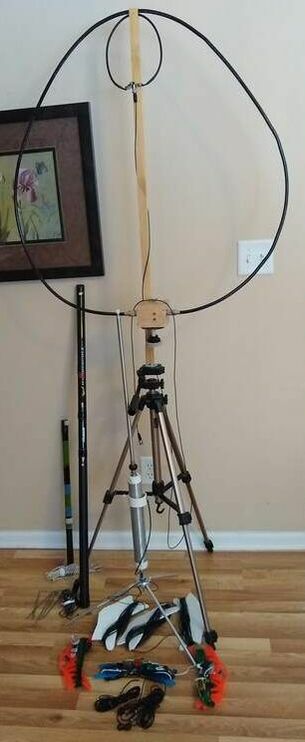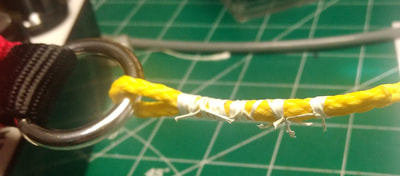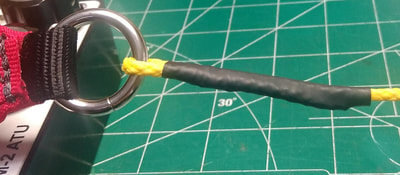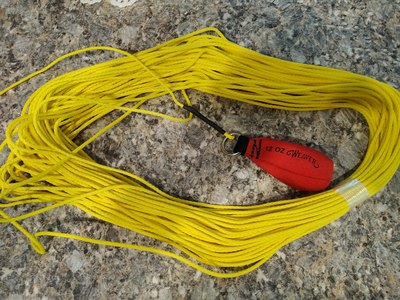Portable Antennas and related things
This page and the ones that follow are focused on portable antenna options that I have been or am playing with. None are necessarily recommended and all this should be taken "for what it's worth." But all of them have worked for me in some situation. Perhaps it will inspire someone to try something. If so, I'm happy!
As I play with antennas that are portable friendly I'm beginning to draw some tentative conclusions.
- They need to be relatively easy to set up. I say relatively because the actual situation will have a big influence over what is "easy" and what is hard. Some situations may only be easy if you have a completely stand alone antenna that requires limited space, such as the Wolf River Coils TIA antenna. Others may be easy because trees or other support options are at hand and accessible, so an antenna such as an EFHW or the 29' end fed your best choice.
- They need to require limited adjustments. Generally if you are portable you also have limited time. Adjusting an antenna can be time consuming and frustrating and potentially require some test equipment beyond just your radio. I find antennas with fixed-tuned or tapped inductors risky as no two setups are identical and the risk of it not being like you want it is somewhat higher. On the other hand I have found antennas such as the EFHW and 29' end fed (if you have a built-in external tuner) to be very forgiving. Trap dipoles , link dipoles or a single band dipole are excellent and easy options when set up as an inverted vee.
- Finally, light weight, minimum bulk and/or easily transportable is an issue. One negative of the Wolf River Coils TIA antenna might be its weight (mine is about 10lb packed up ready to go) and bulk in some situations. On the other hand the 29' end fed antenna is about as transportable as an antenna can be, especially for multiple bands. Also, give special consideration to packing your antenna for transporting. Carefully wound antenna wire and feedline enclosed in some type of bag to keep it from being less than a tangled, snagged mess when you arrive is among the most important considerations! I suggest a wire winder for wire antennas.
The Mystery of Antannas….
2019-03-19 I'm beginning to think antennas are mystical things! You think you have them all figured out but then they throw a curve at you. Since the weather has warmed up considerably here in southeast Wisconsin, I mean reaching the mid to upper 40's during the daytime, I've decided to get back outside and play with my portable antennas. I can actually push a tent stake into the ground whereas just a week or so ago the ground was like rock just a couple inches down! So up went both of my fiberglass push up masts and I've attached my trap inverted vee, link inverted vee, end fed 35 footer and my most recent half wave end fed! All in the past two days. As I type this (right after lunch) my link inverted vee is still up. It is becoming my favorite! Oh, and I had one 1000 mile SSB 20 meter QSO with my DIY Magnetic Loop just before lunch as well. I guess while I'm at it I should say that I also set up the Wolf River Coils Silver bullet 1000 TIA too.
What did I learn from all this? Antennas are mystical! I was disappointed in the end fed half wave antenna. Being single band, 20 meters at the moment, it is kind of frustrating with our current propagation conditions. I really don't have any observations as to its performance since I heard nothing on 20 meters with it, or anything else yesterday.
I went from it to my 35ft end fed antenna. I love its all band nature. But signals were significantly weaker with it compared with my G5RV bread-n-butter antenna. I haven't given up on it but I was disappointed.
Next I put up the trap inverted vee that has been packed away all winter. It is trapped for 40, 30, 20 and 17 meters and tunes all of those. But its bandwidth is pretty narrow on each band and particularly 30 meters resonates too high in frequency. It is discouraging to even think about trying to fix that given the interaction among the various segments. But it is usable. It's light weight and ease of use make it a very tempting option for portable use.
After the trap antenna I put up my 40, 30, 20, 17 meter link inverted vee. It is hard NOT to like it. Bandwidth on each band is respectable. All segments are pretty well situated in each band. Really, it's only inconvenience is that you have to clip and unclip the segments manually. And that is pretty simple to do if you tie off the ends with shock cord so everything is flexible. You can simply slide you hand up the wire to the segment you want to add or remove and make the change without even lowering the mast. I think whatever else I might take on a portable outing, this will be along. It may even be the first choice.
Next, I set up my Wolf River Coils Silver bullet 1000 TIA. It tuned exactly as I expected from my previous playing with it. However when I compared received signals on it with the link inverted vee it they were either weaker or about the same. mmmm, I guess I shouldn't be surprised but it was a bit disappointing. I was overhearing a QSO by K5SWK in 1025 miles away in Central Florida with someone on the Wolf River Coils antenna. He was registering about S8, SSB on 14.185. And then I thought of my trusty DIY Magnetic Loop. Hoping K5SWK would keep talking I quickly set it up beside me in my ground floor shack. His signal was just over S9 with it! So when he finished I gave him a call. He came back. He only gave me an 52 but was copying everthing. We were both amazed. While he was talking I switched to the Wolf River Coils and he couldn't copy me. So back to the loop to finish the QSO! Now I'm excited! I'm wondering whether a good portable package should include both the link inverted vee and the magnetic loop!? As well as the trap inverted vee, the end fed half wave antenna, The wolf River Coils vertical.... and everything else I can get my hands on! Under some conditions, each one will be the best - or the worst!
Like I said, antennas are mystical, or at least mystifying! Time to call it a day....
|
2018-10-08 Some of us just like to play with different antennas. Over the last hour I had 3 QRP QSOs on 3 different antennas and 2 bands. All about 600 miles, all with Q5 reports. Curiously the lowest report was on 40m with my G5RV, 539! The second QSO was on my Link dipole on 30m. Third, was using my 35' EF on 40m. Incidentally, I strung up and took down both the link dipole and 35' end fed during that hour just to demonstrate how easy and quick they are to use. All fun and with the x5105 QRP transceiver. All were CW. And with zero sunspots! Got my QRP and antenna "fix" for the day!☺
|

My Collection of portable HF antennas, Top back: Mag Loop. Left: two push up fiberglass masts with guys and tent stakes. Center: Wolf River Coils Silver Bullet 1000 TIA with radials. Bottom Left 4 band trap inv. vee. Bottom Center: 35' end fed. Bottom Right: 4 band link inv. vee. Very Bottom: shock cord for ends of inverted vee antennas.
|
Backpack-able HF Antennas
As with the radio or rig itself, key criteria for a practical HF antenna for a long wilderness backpacking trip are light weight, compact and easy to put into operation. To fit well inside the pack with everything else they need to be physically flexible or be a small bundle. My experience with backpacks is that they are stuffed absolutely tight with few "straight areas" for anything rigid or more than a foot or so long. I suppose you could hang some rigid pieces on the outside but the likelihood of damage as the pack gets tossed around on the ground or getting snagged as you clamber through the brush seem like hassles to me. So I lean toward wire antennas. They can be relatively efficient, eminently flexible and fit into a pretty small space.
Throw Lines
2018-08-17 I've tried various combinations of cord, water bottles, etc. to come up with a reasonable throw line for hanging an antenna in a tree. All with varying success. I have learned to use an old partially re-filled water bottle because very likely it will break in the process. At least once I got the bottle caught in the fork of a tree and could not get it loose. The amazing thing is that it "served" for years through the harsh winters of Wisconsin supporting one end of my G5RV! Recently I've been fascinated by the yellow line with a little red bag on the end that many use in their YouTube videos! So finally, I broke down and ordered one on Amazon the other day.
|
When it came I was a bit surprised that the bag wasn't attached to the line! So I set about attaching it. My criteria was that the knot should not be snag-able. Of course nothing will ultimately meet that criteria. Trees have an uncanny and unexpected ability to reach out and grab almost anything! But I think I have it, though mind you it is untested at this time.
|
I decided to loop the yellow cord through the ring on the little red bag overlapping itself about two inches. Then I used dental floss to wrap and tie the overlapping section tightly together. Finally, I put a section of shrink wrap tubing over that. Whether it works or not, it looks good! I'll let you know down the road whether it is a good idea or just an idea.
I have since had second thoughts about having the bag permanently attached as it makes retrieving the line from the tree more difficult. We'll see.
Portable Masts
2018-08-07 Another issue with operating portable is how to support your antenna. Trees are probably the most common supports used. And when available and about where you need them, do work well. Sometimes they simply don't work because they aren't available or are in the wrong place, or sometimes are the wrong type for what you want to do. Enter the portable mast. If you are driving to the operating site you can buy or fabricate various masts that can be attached to your vehicle or to a platform of some sort that you can put under a car tire. If you are walking to your site weight and bulk become larger issues and things like fiberglass or bamboo fishing poles may be an option. The ideas are endless. Click here or the Portable Masts heading above for my experiences.
Inverted Vee
An inverted Vee is a good antenna and is about as simple to make as a dipole. It is simpler to set up because it only requires a single support for the center. The ends simple droop down toward the ground so can be tied off to tent stakes, rocks, small trees or whatever. I played with two multi-band versions, a Fan style and a Trap style. The fan style simply has an element (two wires or legs) for each band, in this case 20 and 40 meters. The trap style has a single element divided by a parallel tuned circuit that electrically isolates the shorter portion for the 20 meter band while allowing the full leg length to be used on 40 meters. Each has its advantages and disadvantages. The main advantage of the Fan style is relative simplicity of building and tuning it. It's main disadvantage is that it takes four tie off points rather than two and has more wire to be fiddled with in both set up and take down. The advantage of the trap style is that it only requires two tie off points and so is simpler to deploy. It's main disadvantage is that it is somewhat more complicated to tune.
A variation on the trap style is the link dipole or inverted vee. It replaces the traps with physical spacers or "links" that are either bridged or act as an insulator by pig tails with aligator clips or some simple connector. To change bands one simply has to clip or unclip the appropriate connectors to get the resonant band desired.
PAC-12 Rigid vertical |
This is a short, portable loaded vertical antenna. It is small and as versatile as you want to make it in terms of bands it is usable on.
|
Dipole |
A dipole is a very good candidate. The down side seems is the requirement of a feed-line and the need for two supports. Of course an inverted Vee configuration makes supporting it easier. A possible negative is that they are generally single band antennas.
A video by K1YPP talks about two portable antennas that caught my eye. The simplest is simply a dipole attached directly to the radio with no feedline or tuner. He suggests it can be configured like a Vee (as opposed to an inverted Vee) by throwing both wires up into trees. Or you can put one in a tree and the other on the ground. I haven't tried this yet but it sounds interesting. The limitation is that it is a single band antenna.
|
Magnetic Loops |
Another very interesting antenna is the small magnetic loop antenna. Commercially they are kind of expensive. Could one build one that would work? One I saw being discussed by members of the 4SQRP club recently is the Alexloop. I'm not in any way promoting it, it is just one example.
|
End Fed Antennas
|
The end fed wire antenna is another option. I've played with a half wave version in the past but never very seriously. But I've also explored various end fed multi-band antennas as they have the potential of multi-band use which is attractive. A potential negative for almost all end fed wires is the requirement of some kind of tuner or matching network. Two that I've had some success with are a simple tuned-secondary transformer with very small primary for the end fed half wave antenna. I describe it in detail on the page for End Fed Half Wave antennas. The other one is called the Tuna Tunah ii offered by QRPme. Both are built in a tuna tin, so pretty are small and light.
An antenna suggested by K1YPP in his video is a 51 ft wire and a counterpoise tied directly to a tuner. Another variation I've seen is a 35 ft wire and counterpoise, and I've experimented with using the 33 ft 40 meter half wave on other bands with some success. |
My plan is to explore some of these options, especially the wire antennas as they seem like the best candidates as I see things now.


